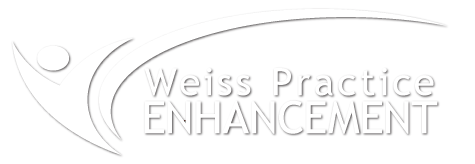In my last article, Six Hiring Mistakes, we examined three common hiring mistakes:
- Assume experience equals expertise
- Hiring someone you want to socialize with
- Hiring when you’re desperate
In this article we tackle the next three mistakes. By avoiding these blunders, you will be to assess your candidates more effectively, match their skills to the job requirements and gain the team’s support and approval for the winning candidate.
So, here are three more things you shouldn’t do!
- Do most of the talking during the interview
You would think it’s obvious that you shouldn’t be doing most of the talking during an interview, but sadly dentists make this mistake. Sometimes the over-talking is due to nervousness or the desire to explain the position. You absolutely do need to share your goals, your philosophy and values but your focus needs to be on learning about the candidate through behavior-based questions. I listed five questions in my article, How to Adapt the Right Hiring Mindset that reveal if the candidate has a learning mindset.
Sharyn’s hiring tip: Begin the interview by sharing your mission/philosophy statement with the candidate and ask for his/her reactions. If you don’t have a formal, written statement, then describe your philosophy of care for patients and your overall vision for the practice. Describe how the position relates to and reinforces your goals. But after that, ask behavior-oriented questions that begin with: “Tell me about a time” or “What would you do if?” Allow silences so the candidate can reflect. If the candidate doesn’t give you enough detail, ask questions as if you were a therapist:
- Tell me more about why you’re good with patients
- Could you share an example of that?
- How did that feel?
- What led you to make that decision?
- What would you change about your decision/performance?
- Not including your team in the process
When the team is not involved in the hiring process, you deprive yourself of their insights. Teams that choose their next colleague develop a natural investment in helping that person succeed once they’re on board. In most cases, you can enlist your team to help recruit, interview and provide feedback after the working interview.
But I do have some caveats. If your team is dysfunctional, immature or unable to be objective, you will need to structure their interactions with the candidate. They should be told from the beginning that although they have input, ultimately the decision will be yours. Also, you may ask employees to sit in on interviews you lead instead of conducting their own interviews. Before you involve the team in any aspect of the hiring process though, you need to do some training about what is legal and appropriate to ask and what isn’t.
Sharyn’s hiring tip: At a team meeting, get agreement about the characteristics and abilities of the person you want to employ. You may want to create two columns on a white board or flipchart. One column could be named “personal qualities” and the other “knowledge, skills and abilities.” The team then brainstorms their must-haves and nice-to-have items. Based on this, the team can then craft interview questions that correspond to those characteristics.
- Having a vague job description
Many dentists don’t have job descriptions for their employees or haven’t updated them in 10 years. Good job descriptions aren’t just a list of tasks, they should also include the philosophy behind your expectations and information on how you will measure success. Job descriptions lay the foundation for how you will evaluate and compensate employees so they should be a vital part of your interviewing process.
There are differences between a mediocre job description and one that can be used as a living document to guide employees’ decisions and behaviors. For example, a mediocre job description would indicate that a front desk employee should answer phones and make appointments. This is ho-hum because there is no guidance on how an employee should answer the phone or any objective measure of what a successful phone call would sound like.
But, most importantly, there is no meaning attached to this responsibility. Following is an excerpt from an appointment coordinator’s job description. It begins with the purpose of this position and describes why it is vital. This purpose then provides the justification for your expectations.
The Appointment Coordinator is the face and voice of our office. S/he is normally the first person spoken to and the first person patients meet. S/he coordinates, integrates and represents all facets of patient services from the 1st phone call through continuing care compliance. S/he is responsible for filling the doctor and hygiene schedules in a balanced, customer-service oriented way and manages the daily, weekly and monthly schedule to meet the practice’s production, efficiency and collection goals.
Sharyn’s hiring tip: Before you bring on a new employee, review your job descriptions not only to make sure they are still relevant, but also to determine if your current staffing has any gaps or overlaps in responsibilities. Interestingly, most conflicts among employees stem from confusion over responsibilities not personality clashes. It is crucial that everyone on your team is clear on the scope and boundaries of their positions before the candidate is hired.
Remember, a comprehensive job description is not the same thing as a job ad. A job description is something you will share with prospective employees once they have expressed interest in your practice; it can be a great tool to assess the candidate’s current skill level and determine a training plan. Your job ad should focus on promoting your practice as a great place to work and describe the qualities, skills and characteristics of the person you are seeking. Our next blog article will be devoted to how to use job descriptions effectively.
While it is true that you may have to work harder to get good candidates, the hiring tips I listed can stock the odds back in your favor. I have numerous resources to help guide you. Contact me to get job descriptions for every role in the practice or a template to write an exceptional job ad.



